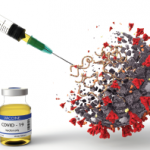The addition of the novel 2009 H1N1 influenza A virus (H1N1) to this year’s flu season has resulted in confusion and concern among patients and physicians—and rheumatologists are no exception. Differences in epidemiology between the seasonal flu and new flu strains as well as uncertainty about the safety and availability of the H1N1 vaccine has left physicians wondering what the correct approach is for their patients. The Food and Drug Administration (FDA) recently approved supplements to existing vaccine licenses to protect against the H1N1 virus. The new vaccine is a standalone monovalent vaccine that is separate from seasonal flu vaccine. It will be made using the well-established egg-based manufacturing process, according to the FDA.1
New Vaccine Concerns
“Although the H1N1 vaccine is a new vaccine that has not been administered in large groups of people, it is made using a similar process to the seasonal influenza vaccines currently in use, and the tolerability profile is expected to be similar,” says Jeffrey Curtis, MD, associate director of the University of Alabama at Birmingham Center for Education and Research on Therapeutics (CERTs) of Musculoskeletal Diseases. “There is often an uncertainty factor associated with any new, widely recommended medical service that can be confusing. For example, patients will now need to receive two influenza vaccinations—one for seasonal influenza and the other for H1N1.”
Patients with rheumatic diseases are at increased risk for morbidity and mortality from the H1N1 virus for many reasons. One is that these patients have at baseline twice the risk for acquiring infections when compared with the general population.2
“Infections kill our patients,” said Dr. Curtis. “Vaccinations can potentially reduce the risk of some infections and possibly lessen mortality and morbidity.”
FLU FACTS ONLINE
The Department of Health and Human Services has launched a new Web site to provide the most current information on the seasonal and H1N1 flu to healthcare providers. Visit www.flu.gov for the latest updates on the flu.
Younger Patients Hardest Hit
The age groups being affected by the H1N1 flu are younger than those seen in seasonal flu, which usually hits the elderly the hardest. This requires healthcare providers to find ways of reaching a different target group.
“Experience from the flu season in the southern hemisphere shows that those hardest hit are between 15 and 40 years of age,” says Kathleen L. Sullivan, MD, professor of pediatrics at Children’s Hospital of Philadelphia. “This is largely in the age range of people with rheumatological conditions.”
Medications and the Flu
Many medications used to treat rheumatic disorders have an immunosuppressive effect. While therapeutic in the context of the disease, these drugs can cause additional concerns for patients during flu season.
Although the H1N1 vaccine is a new vaccine that has not been administered in large groups of people, it is made using a similar process to the seasonal influenza vaccines currently in use, and the tolerability profile is expected to be similar.
—Jeffrey Curtis, MD
“The H1N1 guidelines from the Centers for Disease Control and Prevention [CDC] strongly suggest vaccinations for the immunocompromised or suppressed individual,” says Daniel E. Furst, MD, Carl M. Pearson professor of rheumatology at the University of California, Los Angeles. “For patients with rheumatological disease, there is a higher risk for morbidity and mortality because of the underlying chronic disease and, more importantly, the immunosuppression.” There apparently has been little research into both the safety and efficacy of the H1N1 vaccine in immunocompromised patients or those with rheumatic disease. However, research into the seasonal vaccine shows it is effective in this cohort.
“There are fairly good data suggesting that patients on immunosuppressant medications do receive benefit from the seasonal flu vaccine,” says Dr. Sullivan. “They do make antibodies and that does give protection. There will be exceptions and not all patients will respond equally well to the vaccine.”
Treatment Guidance May Change
Experts suggest that rheumatologists keep up with possible changes in guidelines for administering the H1N1 vaccine. Because it is new vaccine for a new flu strain, it is expected that what is known about the disease and how to treat it will evolve.
We are waiting for further guidance from the CDC regarding the optimal number of doses to be given in immunocompromised patients.
—Camille N. Kotton, MD
“We are waiting for further guidance from the CDC regarding the optimal number of doses to be given in immunocompromised patients,” says Camille N. Kotton, MD, clinical director of the Transplant and Immunocompromised Host Infectious Disease Group at Massachusetts General Hospital in Boston. “In general, immunocompromised hosts tend to have lower immune response to vaccinations and so may need a second dose to achieve the most protection.”
The latest information available at press time is that the first H1N1 vaccine to be released to the general population will be an attenuated live virus vaccine. However, use of this type is not encouraged in immunosuppressed populations, another consideration for physicians.
Which Shots to Give?
“Most [rheumatic disease] patients are lumped together under the rubric of compromised host, and live virus vaccines are contraindicated in this group,” says Dr. Kotton. “Although the guidelines suggest immunocompromised patients should get the shots sooner rather than later, the small time differential is not likely worth the risk of administering a live virus vaccine.”
There are fairly good data suggesting that patients on immunosuppressant medications do receive benefit from the seasonal flu vaccine.
—Kathleen L. Sullivan, MD
Dr. Kotton also stresses that there is no reason to put off getting the seasonal flu shots because the H1N1 vaccine is not yet available. Indeed, there is concern that seasonal flu may be overlooked because of the focus on the newer strain.
Pregnant women are another group that may be more seriously affected by the H1N1 virus than by seasonal flu. It is not yet known if there will be an additive effect when pregnancy is combined with medication-induced immunocompromise. Those who are pregnant may also have a bias against getting vaccinations that the physician should look for.
“A recent article suggested that women have a fear and bias against vaccination,” says Dr. Furst. “This is unjustified given the risks.”
With all of the unknowns currently attached to the H1N1 virus and its vaccine, should rheumatologists suggest that their patients get their shots only from a physician?
“I think it is reasonable to get vaccinated through community sources such as local health departments, churches, pharmacies, etc.,” says Dr. Curtis. “Getting the vaccination is more important than who gives it. Just make sure that patients are aware that it needs to be the inactivated version.”
Kurt Ullman is a freelance writer based in Indiana.
References
- Food and Drug Administration. Influenza A (H1N1) 2009 monovalent vaccines questions and answers. Available online at www.fda.gov/BiologicsBloodVaccines/Vaccines/ApprovedProducts/ucm181950.htm. Updated October 1, 2009. Accessed October 7, 2009.
- Glück T, Müller-Ladner U. Vaccination in patients with chronic rheumatic or autoimmune disease. Clin Infect Dis. 2008;46:1459-1465.
- Curtis JR, Arora T, Taylor AJ, et al. Quality of preventive care for older Americans with rheumatoid, psoriatic and osteoarthritis. Presented at: 75th ACR/ARHP Annual Scientific Meeting; October 20, 2009; Philadelphia, PA.
ACR PUBLISHES H1N1 HOTLINE
The word “fluid” is frequently used to describe what medical science knows about the epidemiology, treatment, and prevention of the H1N1 flu. Therefore, it is important that the rheumatologist have access to current information as the U.S. response to the virus evolves.
The ACR has published a Hotline on the topic called “H1N1 Virus: Implications for Rheumatology.” It is available at www.rheumatology.org/publications/hotline.
The Hotline includes information on seasonal flu vaccines, adverse effects, recommendations for vaccination and management of H1N1, and how to manage patients that have been infected. Each section addresses information that is specific to the rheumatologist when appropriate. The Hotline also gives a long list of other resources on the Web where doctors can find current information and guidelines on vaccination and treatment.
MOST NOT GETTING NEEDED VACCINATIONS

There is a push this year to vaccinate patients with rheumatic disease for both seasonal and H1N1 flu strains but, if recent history is any indication, a large number of these patients will not get their needed vaccinations.
Dr. Curtis and colleagues looked at national Medicare claims data from 1999 to 2006.3 Over a five-year period, they identified many tests and services recommended as preventive measures for older adults (such as vaccinations and bone mineral density testing, among others) and matched those with the specialty of the providing physician. They included influenza vaccination as one of the services.
“Over the five years we evaluated, only about one in five patients with rheumatic or psoriatic arthritis got their flu vaccines each year,” says Dr. Curtis. “This is clearly a quality-of-care issue when important, nationally recommended preventive services such as vaccinations are not being performed.”
The investigators did find that those who saw both a rheumatologist and a primary care physician were more likely to be properly vaccinated than if they were seeing either physician alone.
“Rheumatologists do a good job of taking care of people’s arthritis,” he says. “But they are not shouldering the burden of all of the important preventive tests and services that need to be done for people with rheumatoid and other inflammatory diseases.”


